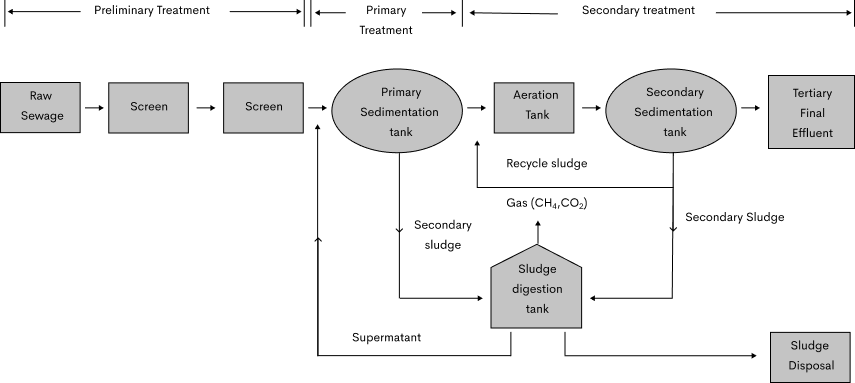

As water covers 70% of our entire planet earth, it is easy to think that it will always be abundant. But in fact, the freshwater, the water that we use to drink, bathe in, and irrigate our farms with, is extremely rare.
Almost 97% of the water that is stored in the ocean is salt water. Only 3% of the world's water supply is freshwater, of which two-thirds is frozen, forming polar ice caps and icebergs.
As a result, almost 1.1 billion people in the globe lack access to water, while 2.7 billion face water scarcity for at least one month of the year. Meanwhile, according to a report by Robert Glennon, an average person uses at least 90 liters of water each day to flush their toilets. Precisely speaking, it’s about 5.8 gallons of water. With the rapidly growing global population in a haphazard way and climate change resulting in more water crises, where will we get enough water to maintain sustainability?
We spend a lot of money treating drinking water when we use only 10% of it for drinking and cooking, while the other 80-90% that reaches the households goes to waste and pollutes our water bodies and environment. As a result, we must encourage a decentralized strategy that prioritizes water conservation, source sustainability, storage, and reuse whenever practicable.
In order to achieve the same, we have to increase the use of recycled water for irrigation, landscaping, industry, and toilet flushing. Recycled water is also utilized to replenish delicate ecosystems such as inland wetlands, ponds, and lakes, when water is drained for urban or rural uses, leaving wildlife, fish, plants, terrestrial organisms vulnerable. It also helps to recharge groundwater aquifers in coastal places, preventing saltwater intrusion, which happens when groundwater is over-pumped.
However, the use of recycled water for drinking is uncommon, mostly because many people are revolted by the thought of water that has been in our toilets going to our taps. Meanwhile, a few countries, like Singapore, Australia, and Namibia, as well as states like California, Virginia, and New Mexico, are already drinking recycled water, proving that purified wastewater is safe and clean while also assisting in the relief of water scarcity.
The term "toilet to tap'' might be deceptive as the recycled water that ultimately becomes drinking water goes through a comprehensive process of purification. In addition, it is added to groundwater or surface water before being transferred to a water treatment plant, where it's treated once again. Moreover, it has been proven to have fewer pollutants than already treated water supplies.

Several technologies are used to recycle water, depending on how pure it needs to be and what it will be used for. Here’s how it's done at a traditional wastewater treatment plant.
At a wastewater treatment facility, as soon as the sewage arrives it is sent through a screen that is specifically designed to remove large pieces of debris that could potentially harm the equipment used elsewhere in the facility. After passing through the screen, the sewage water enters the grit chamber. Sand, gravel, eggshells, and any other solid particle that survives the screening process can all be considered as grit.
Even after passing through screens and a grit chamber, the water still contains additional materials that must be removed. It further runs slowly through a sedimentation tank, and the particles that remain in the water begin to drift/settle to the bottom of the tank.
The bulk of the solids has been removed from the water at this point. However, the water is not yet pure enough to be released back into the environment, so it moves onto the next stage to be cleansed even further.
The next stage is designed to remove up to 85% of organic matter that is still present in the wastewater. The activated sludge process, which takes place immediately after the sedimentation tank, is used by the majority of facilities. The sewage is pumped into an aeration tank and mixed with sludge. As the water enters the aerator and is in contact with air, it encourages the development of bacteria and other tiny organisms in the sludge. Bacteria and other microbes in the water break down organic materials into harmless byproducts along with reducing the BOD (Biological Oxygen Demand) levels and COD (Chemical Oxygen Demand) levels. The water will be kept in the aeration tank for three to six hours (depending on the wastewater characteristics), giving bacteria and microorganisms enough time to break down any leftover organic matter. It is then transferred to another sedimentation tank after leaving the aerator to separate the particles from the water.

A diagrammatic representation of a flow chart of conventional sewage treatment plant.
Regardless of the method employed, the wastewater will be treated one more time before being discharged back into the environment. The water is transferred into disinfection tanks, where it is exposed to chlorine after it leaves the sedimentation tank. Wastewater usually spends 15-20 minutes in these chlorine-filled disinfection tanks. Chlorine, in the form of hypochlorite irons, kills the pathogenic bacteria that may be present in the water such as Salmonella, Coliform bacteria, and many more.
After passing through this final stage, the water is discharged into local rivers. The last stage assures that the vast majority of germs in the water are killed, ensuring that it will not affect humans, animals, or the environment once released.
Thousands of liters of treated wastewater are not utilized. People, whether knowingly or unknowingly, pay little attention to wastewater treatment and its reuse. Thus wastewater treatment plants play an important role in meeting sustainable demands, i.e reuse, and recycling of wastewater along with protecting humans and the environment from the hazardous compounds contained in wastewater.